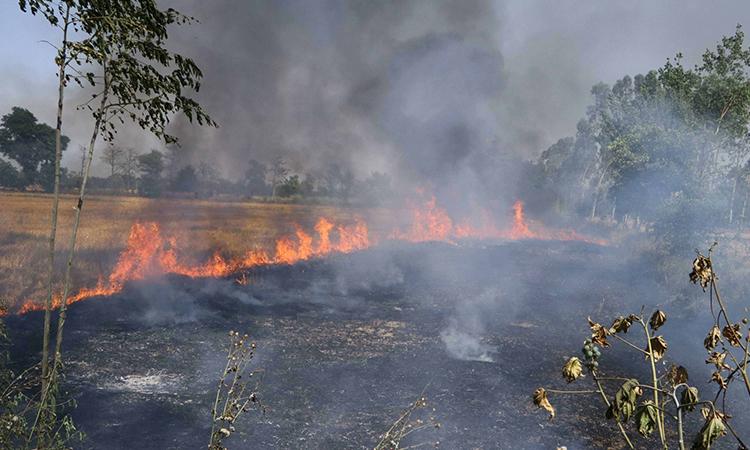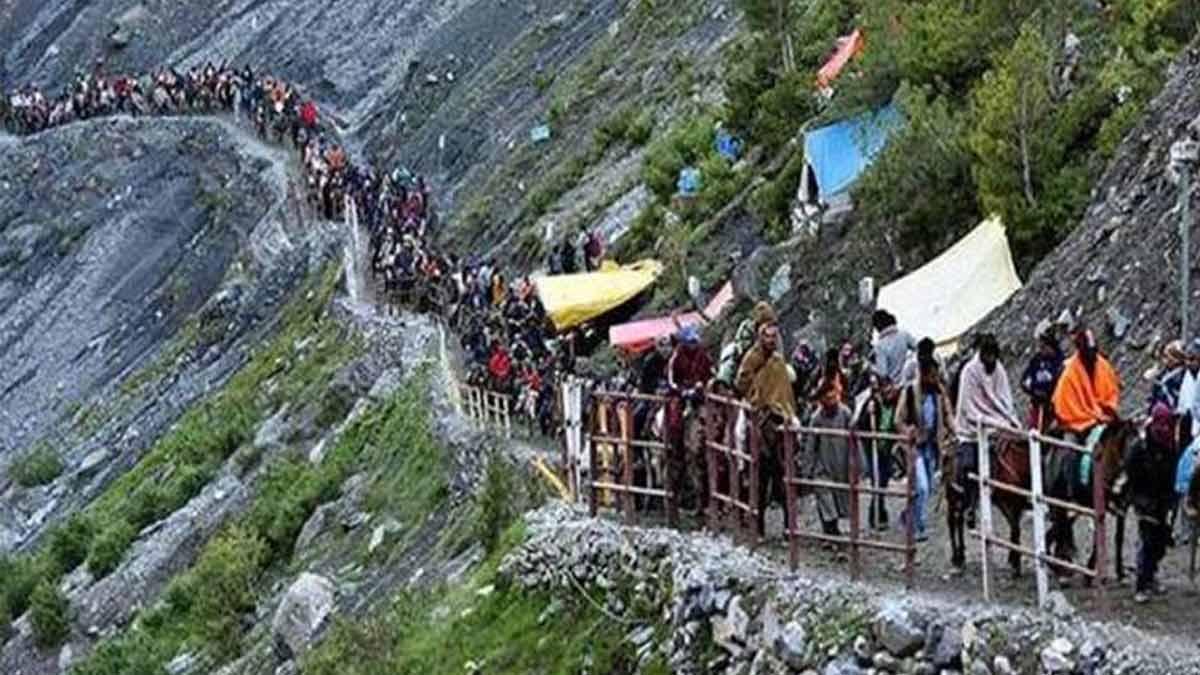The government has claimed that the number of farm fires in Punjab, Haryana and eight districts of Uttar Pradesh falling in the NCR this season have gone down compared to last year. But the numbers for Punjab till October 13, even if way less than last year's, are more than that in 2019.
It is the season of Kharif crop harvesting in north-west India. Despite measures by the multiple government departments, such as providing happy seeders and harvester machines, the farmers in Punjab and Haryana resort to stubble burning with the pollution ultimately travelling to Delhi-NCR. The farmers resort to stubble burning owing to short window between harvesting Kharif crop and sowing for Rabi.
Indian Space Research Organisation (ISRO) has been monitoring farm fires on a daily basis for many years now. According to the ISRO data, the cumulative fire count from October 1 till October 13 for the year 2019 was 715; for 2020 it was 2413 and this year, it is 842.
The numbers show that the stubble burning, called Parali burning in popular parlance, is definitely less this year till October 13 compared to last year, but it is more than the number of such incidents 2019.
Amritsar and Tarn Taran districts lead almost all three years among the most farm fire incident districts, the others being Amritsar, Ferozpur, Gurdaspur, Kapurthala, FG Sahib and Faridkot.
Also Read | Sidhu meets Rahul Gandhi, withdraws resignation as Punjab Cong president
The data for three years shows that Amritsar registered 244 farm fires in 2019, 682 instances in 2020 and till Oct 13 this year, the number stands at 211; Tarn Taran district registered 143 farm fires in 2019, 598 in the year 2020 and 211 till Oct 13 this year; Ferozpur registered 30 farm fires in 2019, 138 in year 2020 and 31 till now this year; Gurdaspur had 22 farm fires in 2019, 162 in 2020 and just 34 this year till Oct 13; Kapurthala registered 20, 69 and 41 farm fire incidents in 2019, 2020 and 2021 respectively; Faridkot registered 11, 52 and 17 while FG Sahib registered 06, 48 and 46 incidents in 2019, 2020 and 2021 till October 13 respectively.
On Friday, the government claimed that paddy residue burning events have reduced by 69.49 per cent in Punjab, by 18.28 per cent in Haryana and by 47.61 per cent in the eight NCR districts of Uttar Pradesh during the one-month period since September 15 compared to the same period last year.
There are two main reasons why despite so many far farms this year, the air pollution levels are considerably less till now. One, the harvesting of paddy crop has not picked up as yet as much as it should have been because of the delay in withdrawal of monsoon and second, the wind direction and velocity was not favourable for transferring air pollution to Delhi-NCR till Thursday.
Data from the Agriculture Ministry has shown that paddy harvesting is complete only on 5.51 per cent of the 411.46 lakh Ha across India. "Even in Punjab the inclement weather has meant that the farmers had delayed harvesting the kharif crop. That will further narrow down the window and the farm fire instances are set to rise," said an official from Punjab.
According to data from Punjab, the total paddy crop area in both Punjab and Haryana is estimated to be at 31 lakh Ha this year, of which as much as 26 Ha is under non-basmati rice that causes the stubble burning problem. Farmers prefer particular variety/varieties that are offered substantial value under the government's Minimum Support Price (MSP).
This year, after the formation of the permanent Commission for Air Quality Management for Delhi NCR and Surrounding Areas (CAQM), the Union Ministers for Environment and Agriculture had taken personal interest and held multiple meetings, some together, some individually, with the officials and political leadership from Punjab and Haryana both. Efforts were made by Punjab government for bio-decomposition of parali over 5 lakh Ha, one such meeting on September 23 was informed.
The India Meteorological Department (IMD) has indicated that there would be rainfall in north-west India on October 16 and 17, after which it is likely that there would be stronger winds towards Delhi that can lead to increased air pollution.
System of Air Quality and Weather Forecasting And Research (SAFAR) at the Indian Institute of Tropical Meteorology (IITM), Pune is a research-based initiative integrating multiple factors and issues forecast for air quality for Delhi and three other cities. SAFAR has also been tracking farm fire incidents based on satellite images from ISRO and NASA.
Explained senior IITM scientist and Director, SAFAR, Gufrain Beig: "Till the time monsoon does not withdraw, there are no calm weather conditions. Therefore, late withdrawal of monsoon means local dust and long-range dust transport was more. Therefore, the PM10 particles are more at this time and PM2.5 particles that are unhealthier are relatively very less compared to last year."
"When monsoon withdrawal is complete, not just the wind speed and direction, the temperature too will then matter. Then Delhi-NCR will have more air pollution from parali burning travelling towards it," he said.
The CAQM has been regularly talking with not just Punjab but also with Haryana and Uttar Pradesh for ensuring strict implementation of the action plan and the framework to curb paddy residue burning as per the protocol. CAQM has also held series of meetings with state government officials including the district collectors/ district magistrates of Punjab, Haryana, and Uttar Pradesh.
Also Read | Singhu killing: One Nihang Sikh surrenders before Haryana Police
"From Monday onwards, after this two-day likely rain in northwest India, will we be able to gauge the correct scenario vis-a-vis stubble burning. Whether or not our efforts at restricting farm fires are successful will be known then," said an officer from the Environment Ministry, who has kept tabs at the development, but did not want to be quoted by name.


















